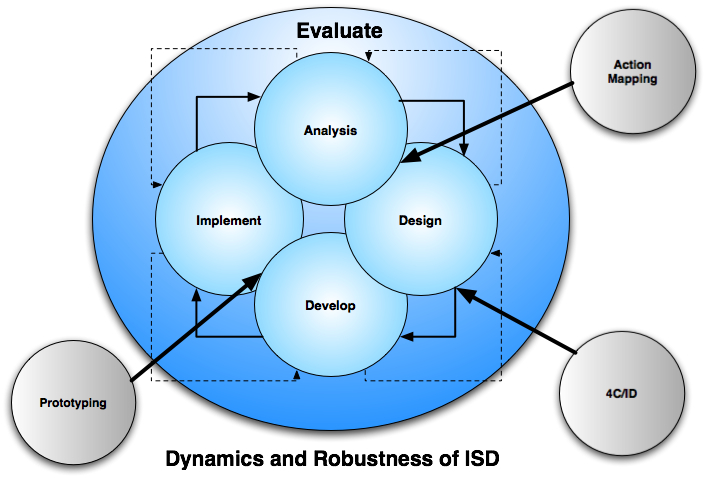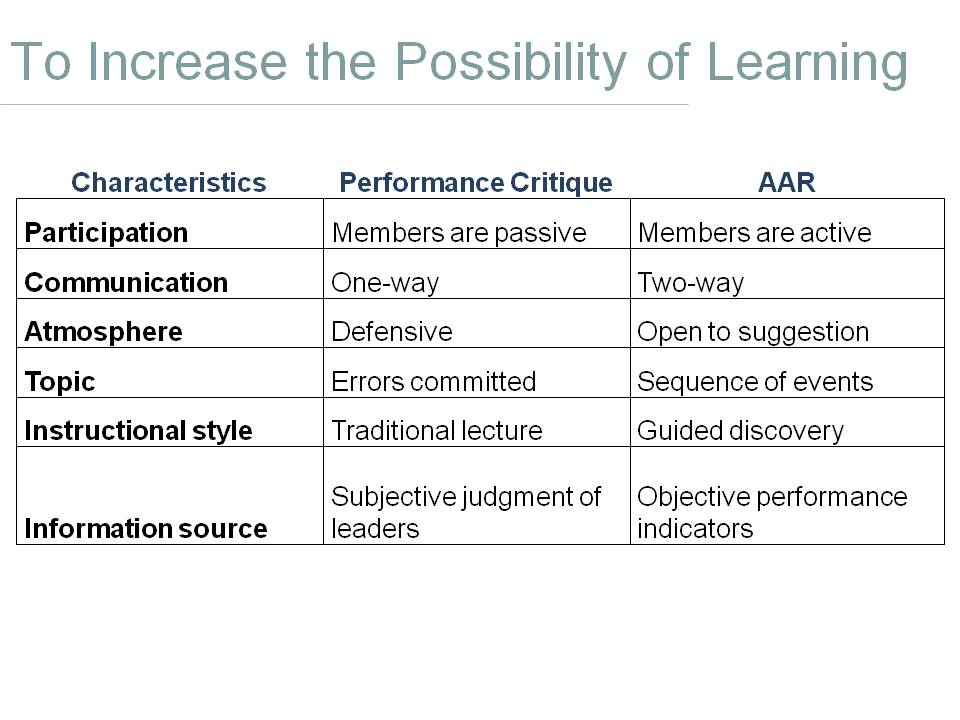This is the fifth in a series of posts on Agile Learning Design:
- Post 1 - Agile Design: An Ethos for Creating Learning Platforms.
- Post 2 - Planning in Agile Learning Design
- Post 3 - Orientation in Agile Learning Design
- Post 4 - Designing Agile Learning
The fourth concept of PODSI (Plan, Orientation, Design, Select, & Iterate) is selecting and developing the learning objects that best promotes learning. However, the selection of the learning objects in Agile Learning Design is not really about SCORM or AICC standards, but rather about providing the best learning environment that supports the Agile ethos — "Solutions that promote and speed the development of learning processes over comprehensive documentation."
This means chunking the contents into the most logical units that promote and speeds the learners' ability to learn and then packaging it into various media that provide the best delivery methods. Thus rather than breaking the material down into the smallest possible objects and tagging it for future reuse, it must be designed with the learners first in mind. A few examples:
Lectures
Lecturing in the classroom is over and if it is not over in your organization then you are wasting company resources. Now that does not mean "lectures" are finished because they can be quite an effective and efficient means to deliver information, ideas, stories, etc. And it does not mean putting them in a Captivate or Articulate elearning program that locks the learners to their desk. Rather it means putting them in an audio file, such as mp3, so that they can be uploaded to an iPod or similar device that allows them to be portable. The research is starting to show this as the best method for delivering them (Science Direct [pdf] or The Independent) and that learners prefer this method (New Scientist).
Reading Material
Rather than putting a lot of text into an elearning program that requires the learners to click the next button 10 to 30 times, put it in a PDF that is more suited for this type of content. This gives the learners several options for viewing it on screen or printing it if they desire, in addition to being able to add sticky notes. PDFs now allow the use of links, videos, and audio that greatly increase their versatility. Yes an elearning program allows you to ask questions as the learners proceed through the "click screens" but you can get just as good or better effects by asking the questions at the beginning of the PDF file (or where needed) so that you "preframe" the learner before they read the material. In one study the learners had a 10 percent better recall when they first tried to retrieve the answer before it was shown to them (see Scientific American - second page).
Question and Answers
A classroom environment allows the learners to ask questions; however, there are good tools that allow you to compensate for this in a dL (distributed Learning [only the L is capitalized]) environment — Twitter (free) or Yammer (if you need a more secure environment). These tools allow learners, instructors, experts, etc. to exchange short questions, answers, observations, etc. Does this mean we are trying to do away with the classroom? Nope...
Classrooms
Classrooms allow the learners to gain skills in task that can not be accomplished in a dL environment. So why not just perform all the learning in the classroom? The two main reasons are learning variability and cost. People learn at different rates, thus they need to be able to train at their own pace in order to master the material. For example, this chart shows the learning variability of a classroom session that was transformed to a dL environment (Sitzmann, Ely, 2009):

In theory, a classroom has to be long enough for the slowest learner to learn if you want them to master the material. In reality, classrooms are normally designed for the average learner, which means a large percentage of learners are wasting their time and another large percentage are not given the time to master the material. Thus the best environment for most learning is not in a lockstep (classroom) environment, but rather in a self-paced dL environment. Secondly, classrooms are normally one of the most expensive media for learning. ISD or ADDIE is often wrongly identified as a classroom creation tool, but as one who was formally trained in it, one of the first things hammered into us was to select a different delivery option if at all possible because of a classroom's lockstep nature and cost. The real reason for the classroom's dominant position are the people and/or organization behind the tool — they fail to stretch themselves to create a self-paced learning environment.
Blended Learning
This does not mean the classroom is dead as there are many things that must be taught in a classroom type setting or safe learning environment. In addition, classrooms actually enhance dL in that a blended learning environment composed of classrooms and dL increase learning by an average of 11% for both procedural and declarative knowledge (Sitzmann, Ely, 2009). There seems to be something almost magical about blending the interactive and social nature of classrooms with the self paced environment of dL. In addition, dL can have a attrition or drop-out rate as high as 20% as it often treats the person as a "lone learner." For example, in an informal learning episode a person will interact with an average of ten people (Tough, 1999). Adding blended learning and Twitter/Yammer provides the social aspect that we need when it comes to learning so that it does not become a lone-learning environment.
Doing
By delivering the pre-learning to the learners, a classroom type environment or similar setting can now be used exclusively for not only the required social interaction but perhaps more importantly for activities that allow the learners to perform (doing). In addition, as our online tools become more powerful, we are able to create activities that allow the "doing" in a dL environment. For example, although this multiplication game is made for schools, it has an interesting engine behind it:
- html file : This of course is the file your browser opens.
- Flash file (swf): Shockwave Flash file.
- xml file: This is the file that the swf app reads. It supplies the "questions" and "answers." If you open it up with a text editor and study it, along with running the game, you will see that you can edit the xml file to create new questions and answers. While I have not tried it, you could probably add images to the questions/answers.
- Note: You can download the zip file that contains the above three items.
It's the xml file that is the most interesting because rather than having to edit the flash file, a Learning Designer with a little training could edit the xml file to update it or rework it for a different learning environment. A few of these types of applications would make a good addition to an elearning development library that allow activities to be rapidly built. Has anyone seen other similar examples or instructions for creating them?
Building objects such as these are faster and easier than trying to incorporate everything into one giant elearning package. In addition, they can be iterated faster and are easier to fix and update. But most importantly, they consider the learners first by targeting their learning needs. Questions? → → http://twitter.com/iopt
References
Sitzmann, T. & Ely, K. (2009). Web-Based Instruction: Design and Technical Issues which Influence Training Effectiveness. Retrieved Nov, 2, 2009: http://webboard.adlnet.org/Technologies/Evaluation/Library/Additional%20Resources/Presentations/ASTD%202009%20Presentation%20Slides.pdf
Tough, A. (1999). Reflections on the study of adult learning. Paper presented at the 3rd New Approaches to Lifelong Learning (NALL) Conference, University of Toronto: Ontario Institute for Studies in Education, Toronto, Canada. Retrieved January 8, 2008 from http://www.oise.utoronto.ca/depts/sese/csew/nall/res/08reflections.pdf
















